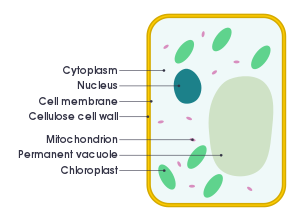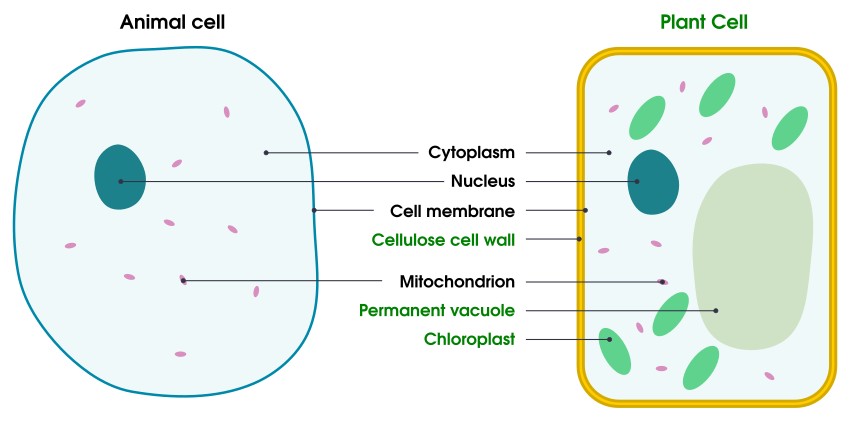IGCSE Science/Section 2: Structures and functions in living organisms/Cell structure
Appearance


Cell organelles: Small structure having definite shape and performing specific functions
They are embedded in the cytoplasm, These structures are called cell organelles. Most cells have these organelles:
| Name | Function |
|---|---|
| Nucleus | It regulates all important activities of the cell and plays an important part during cell division. |
| Cytoplasm | a place for chemical reactions to happen, and it contains enzymes which speed up these reactions |
| Cell membrane | It allows only certain substances to pass through small pores on it and protects the inner cell contents. |
| Mitochondria | It perform cellular respiration, referred as powerhouse of the cell. |
Plants cells have:
| Name | Function |
|---|---|
| Cellulose cell wall | It gives a definite shapes to the cell , allows all substances to pass through it and protect the inner cell contents called protoplasm. |
| Plastids | They are of 3 types:
i)Chloroplast- It can trap solar energy and covert it into chemical energy in the form of food through the process of photosynthesis. ii)Chromoplast-It contains coloured(red, yellow, orange)pigments that impart colour to flowers and fruits. iii)Leucoplast-It is colourless pigment that store food in the form of starch, proteins and fats. |
| Vacuole | It stores sugar ,mineral and water in the form of cell sap and maintain the shape of cell. |
Yeast cells have:
| Name | Function |
|---|---|
| Chitin cell wall | to keep the structure of the cell |
| Vacuole | to store nutrients and food |
Animal cells only have the basic organelles, but plants have all the basic organelles and some more: a cell wall, chloroplasts and a vacuole:

